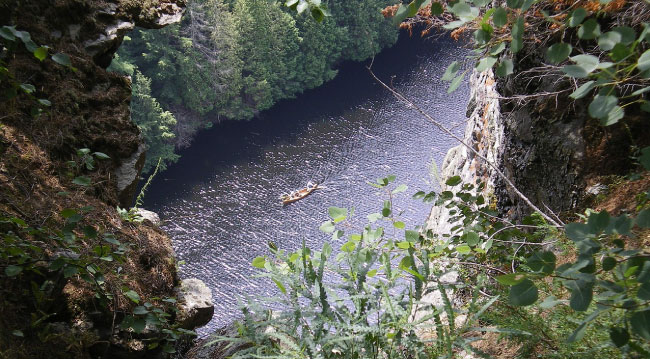Canoe travel is an ideal way of getting back to nature. Tim Mikulski gives an account of his time on the water in Quetico Provincial Park in Ontario, Canada.
North of the Border: Six Days in the Quetico Provincial Park
The Boundary Waters between Minnesota and Ontario are one of the best known wildernesses in the world. Known for its thousands of lakes, thick mixed forests, tall rock faces, and abundant marine and wildlife, it’s a popular destination for canoeists, fishermen, and campers alike. The limit of entry and camping permits assure a serene and peaceful environment—even flight paths above the waters are limited.
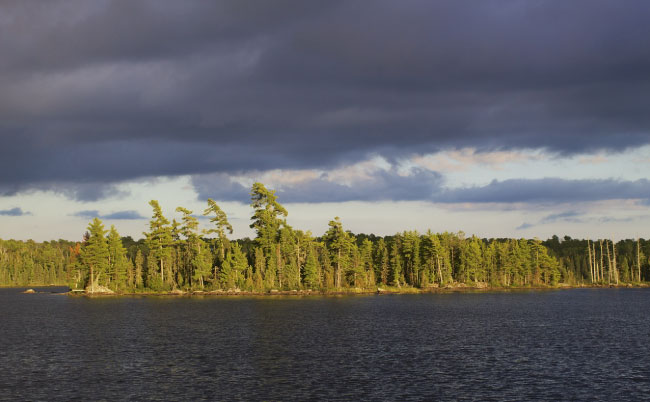
The Boundary Waters are formed by the Boundary Waters Canoe Area of Superior National Forest in Minnesota and the Quetico Provincial Park in Ontario. My group and I spent six days canoeing in the Quetico, and it stays with me as one of the best and most memorable experiences of my camping career. As Sigur F. Olson said of the Boundary Waters, “I go because it irons out the wrinkles in my soul.”
Getting To Quetico
Leaving from our suburb of Chicago in mid-afternoon, we arrived at Tomahawk Scout Reservation in Birchwood, Wisconsin late at night. We spent the night in their bunkhouse and were on the road the next morning, arriving at our outfitter (Canadian Waters) in Ely, Minnesota at around 10 a.m. We packed our dry bags and crew gear into the iconic Duluth packs and collected our Kevlar canoes, and loaded every into and on top of Canadian Waters’ vans and set out for our put-in point at Moose Lake. From there, we took a motorboat tow to our entrance point at Prairie Portage—a necessity because our camping permits were for the Quetico only (as a rather late applicant) and we wanted to be able to spend two days at Agnes Lake. After eating lunch and checking our papers with the ranger, we put in on Basswood Lake at Bayley Bay and were on our way.
[mc4wp_form]
The Way to Agnes Lake
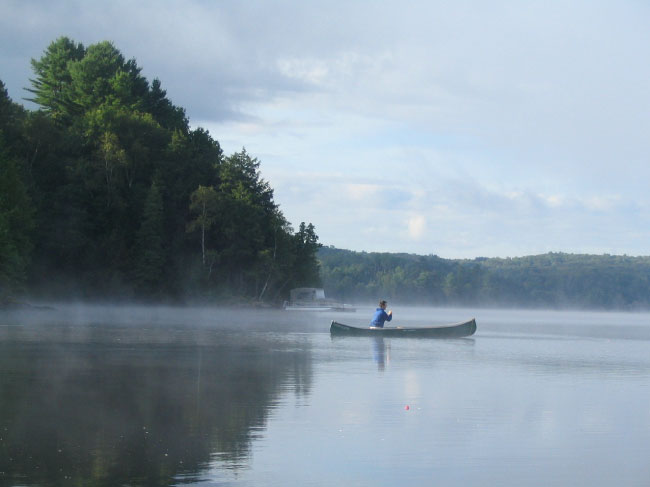
Our first day was quite simple: canoeing as a large group (we were actually two crews, he maximum crew size is 9 to preserve campsites), we made our way north into Bayley Bay and portaged into Burke Lake, where we spent the night. Campsites are fewer and farther between in the Quetico than in the BWCA so it’s possible to need to paddle miles longer than planned. Fortunately, we found a place to stay on Burke Lake just fine, with the other crew on a small island and ourselves are a peninsula. Another note about Quetico campsites is that they are much more rugged than those in the BWCA; the only amenities you’ll be met with are a rock firepit, unlike the benches and cooking grates of the United States side. However, this flexibility often led to much more beautiful and natural-feeling sites, and I highly recommend the Quetico if you have a long enough time to reach it.
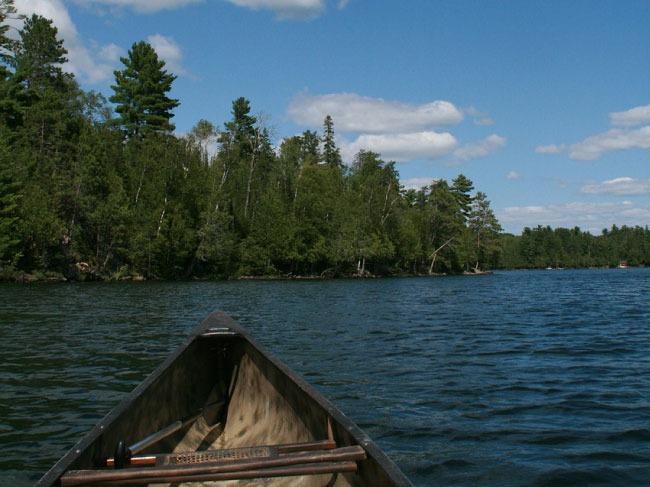
The next day, we split up with our other crew. They were heading north through a chain of lakes and small portages to reach the north end of Agnes Lake while we were taking a few long portages to reach the south end. First reaching the west end of Burke Lake and crossing the length of Sunday Lake, we were met with the trek’s biggest portage: a 190 rod portage, followed by a brief paddle and then a 160 rod portage into Agnes Lake. One rod is 16 ½ feet (a typical canoe length), and there are 320 rods in a mile. After that back-breaking, mosquito-slapping, mud-splattering ordeal, we were left less than a mile to our ideal campsite: on the west bank of Agnes Lake, just across from Louisa Falls. We made a trip over to the falls (and its five foot deep “bathtub” at the base) multiple times, and it was one of the most beautiful sights we saw in the park.
We spent two nights at our Agnes Lake campsite, and used the day between for a day trip up to the middle of the lake to fish and relax. Our map did show some ancient pictographs on rock faces on the west end’s cliff faces, but our own searches revealed little and it was near-impossible to distinguish between ancient pictographs and brightly-colored fungus. We finished the day with a final return to Louisa Falls and enjoying the enormous pike we caught during the day.
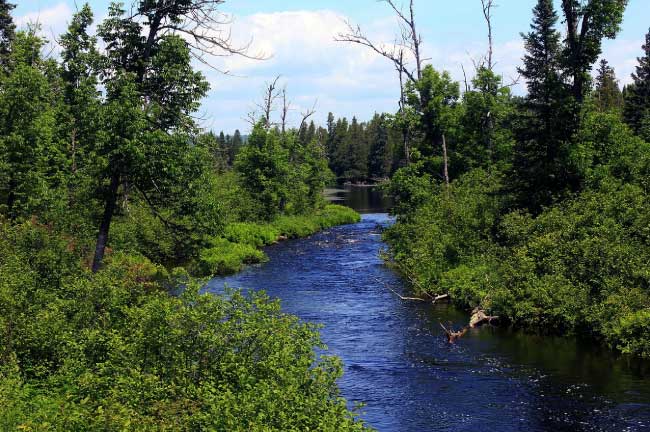
Reuniting With the Other Crew
The next morning, we broke camp and headed north once again. This day brought us a whopping six portages, but (thankfully) none of them over 40 rods, with most near 20. We passed all the way through East Lake, portaged into Jeff Lake, and from there portaged to a small unnamed lake that led us to into a marsh with a path cut into the reeds. It was quite a change of scenery after the thick forest of the rest of the park, as well as a peaceful break from the wind of the larger lakes. The marsh exited into West Lake, where we took the portage at the middle of the thin lake into South Lake. A quick paddle through south lake and one last portage brought us to North Bay of Basswood Lake, completing both the majority of our paddling for the day as well as our tour of all four cardinal directions!
Our campsite for the night was on a point across from an island upon which our sister crew was camping, and my friend (also co-crew leader) and I met with the other crew to plan our next day’s move. We knew that the campsite close to the border called Kings Point was big enough to house both our crews, so decided to camp there for the final two days of our trek. One small group was to leave early and secure the campsite for our crews, and the rest were to follow.
The Missing Canoe and Kings Point
Throughout this whole trek, we were blessed by having Kevlar canoes. Almost thirty pounds lighter than their aluminum cousins, they make portaging infinitely easier but are susceptible to blowing away at night. During our night on North Bay, a storm blew in. Three canoes were on the rocks when we went to bed, but we saw only two there in the morning, with one already halfway in the water. A binoculars scan of the lake during breakfast yielded nothing, so we sent out our remaining canoes to look for it while the other crew headed on to Kings Point.
Our biggest fear was that the canoe was blown through the straits formed by Neil Island and White Island into the larger part of Basswood Lake, in which case we probably would’ve had to call Canadian Waters and ask them to tow out another canoe for us just so we could get back. Things weren’t looking good after we found nothing around Neil Island and north of White Island, but fortunately we found the boat floating and undamaged on the shore to the east of White Island. Back in our boats, we continued to Kings Point and fully reunited with our other crew.
The two days at Kings Point were the most memorable of the trip, and the reunion full of card games and stories gave the whole campsite a party atmosphere. We spent two nights there, using the day between to fish, swim, visit Basswood Falls, explore the abandoned ranger’s cabin nearby, and drag a large beached log out on the lake to play on. Supplemented by unfathomable amounts of euchre and other card games and a few big bass catches, the day was everything I dreamed the Quetico would be in the months preceding the trip. If you’re planning your own trip to the Quetico, I can’t stress enough how nice of a site Kings Point is and how enjoyable it is to have a couple days where you don’t need to break camp.
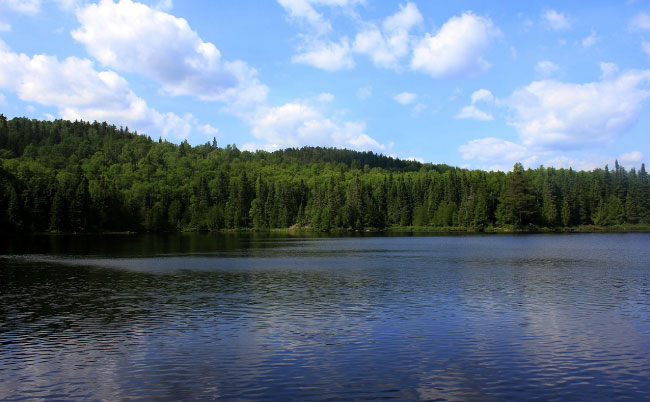
The Final Day and the Return to Ely
Our last day was undoubtedly our most tasking. Since our camping permit was only for the Ontario park, and our outfitter operated in the US, our last day consisted of nearly 15 miles of paddling and three portages from our Kings Point campsite to our pickup point at Fall Lake in the BWCA. This was made no easier by the consistent headwind throughout the day, only picking up as the day went on. While the weather was beautiful as it had been for the majority of the trip, the paddle itself was exhausting, especially after days and days of paddling and having exhausted our extra snacks. The final push across Fall Lake was celebratory, and we were greeted by an enthusiastic driver who was happy to help us load our canoes onto the van.
Even as the drive back to Ely was a relief, some of us already felt a desire to return to those fun times at Kings Point or Louisa Falls. It was an experience like none other I’ve had before, and one I hope to have again. Although it was nice returning to the creature comforts of cell reception, mattresses, and non-powdered eggs, every time I recall the Quetico I remember an excerpt from a song we sang at my Boy Scout camp: “Because when I left there, a part of me stayed/for me to return once more/scattered in the leaves of the aspen trees/and sown in the sandy soil.”
Tim Mikulski

